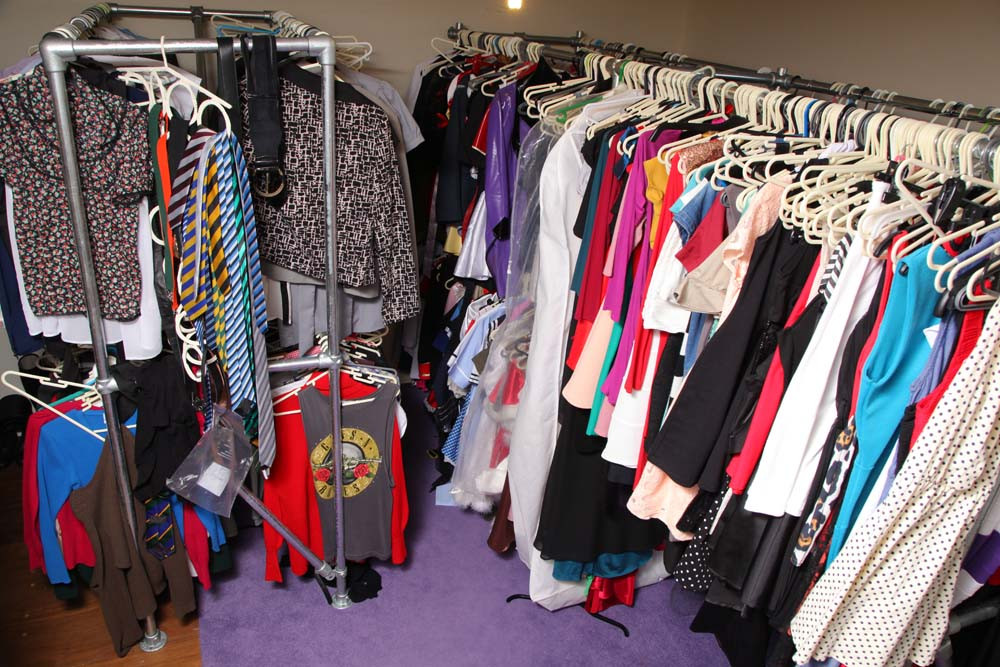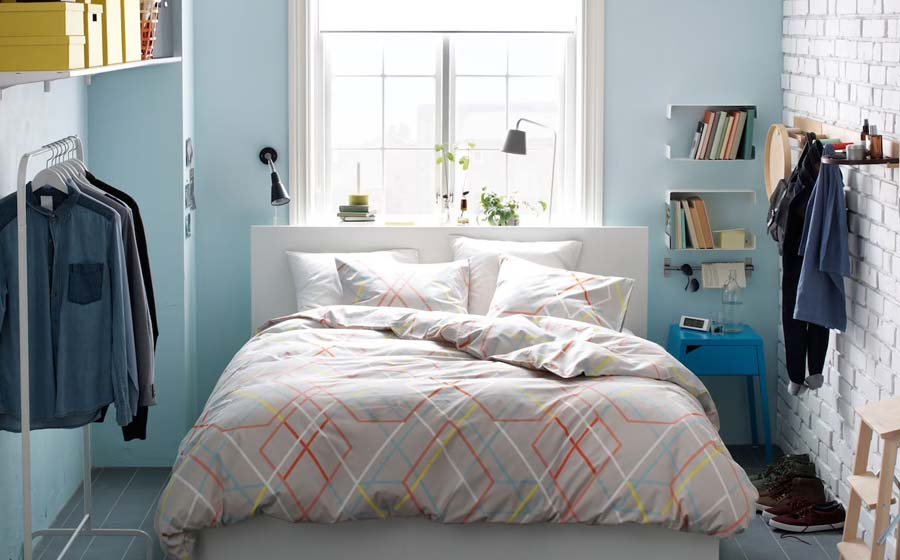The Minimalist Approach to Closet Design

Minimalism, a philosophy that emphasizes simplicity and functionality, extends its reach beyond living spaces to encompass wardrobe design. A minimalist closet prioritizes functionality, efficiency, and a sense of order, transforming the act of getting dressed into a mindful and enjoyable experience.
Prioritizing Functionality and Efficiency
A minimalist closet design focuses on maximizing space and accessibility, ensuring that every item is readily visible and easily reached. This approach streamlines the process of selecting an outfit, minimizing time spent rummaging through a cluttered wardrobe. Key features of a minimalist closet include:
- Open Shelving and Drawers: Open shelving and drawers provide clear visibility of all items, eliminating the need for constant digging. This allows for quick and easy access to clothing, reducing frustration and wasted time.
- Vertical Storage: Maximizing vertical space through shelves, hanging rods, and drawers allows for efficient storage of clothes, maximizing the use of available space.
- Multi-Functional Storage Solutions: Employing multi-functional storage solutions, such as shoe shelves with integrated drawers or hanging organizers with compartments, optimizes space utilization and provides dedicated storage for specific items.
Examples of Minimalist Closet Design Aesthetics
Minimalist closet design aesthetics often emphasize clean lines, neutral colors, and a sense of calm. This approach creates a visually appealing and serene environment, fostering a sense of peace and order. Some common examples of minimalist closet design aesthetics include:
- White or Light-Colored Cabinets: White or light-colored cabinets create a sense of spaciousness and brightness, enhancing the overall aesthetic appeal of the closet.
- Open Shelving with Minimalist Hardware: Open shelving with minimalist hardware, such as sleek metal brackets or hidden fasteners, contributes to a clean and uncluttered look.
- Natural Materials: Incorporating natural materials like wood or bamboo adds warmth and texture to the minimalist design, creating a balanced and inviting atmosphere.
Benefits of Decluttering and Organizing a Wardrobe
Decluttering and organizing a wardrobe offers numerous benefits, including:
- Reduced Stress and Anxiety: A clutter-free wardrobe promotes a sense of calm and order, reducing stress and anxiety associated with a chaotic environment.
- Improved Decision-Making: A well-organized wardrobe simplifies the process of choosing an outfit, promoting confidence and reducing indecisiveness.
- Increased Productivity: Streamlined wardrobe management saves time and energy, allowing individuals to focus on other tasks and priorities.
- Sustainable Practices: Decluttering and organizing a wardrobe fosters a mindful approach to clothing consumption, encouraging responsible use and reducing textile waste.
Key Elements of a Minimalist Closet

A minimalist closet isn’t just about having fewer clothes; it’s about creating a space that is both functional and visually appealing. This means choosing the right storage solutions, accessories, and materials, and understanding the role of lighting.
Storage Solutions
The right storage solutions are essential for maximizing space and keeping your closet organized. Here’s a breakdown of common options:
| Type | Description | Pros | Cons |
|---|---|---|---|
| Shelves | Open shelves provide easy visibility and accessibility. | Versatile, affordable, and visually appealing. | Can collect dust, items may need to be folded neatly. |
| Drawers | Closed drawers offer protection from dust and provide a clean, streamlined look. | Conceal clutter, ideal for delicate items. | Less visibility, can be difficult to access items at the back. |
| Hanging Rods | Hanging rods are essential for keeping clothes wrinkle-free. | Ideal for maximizing vertical space, easy to access clothes. | Can be visually overwhelming if not organized well. |
| Pull-Out Baskets | Pull-out baskets are perfect for storing small items like socks, underwear, or accessories. | Easy access, maximizes space, helps with organization. | Can be bulky, may not be suitable for all closet types. |
Essential Closet Accessories
A few key accessories can make a significant difference in maximizing space and keeping your closet organized:
- Shoe Organizers: These can be shelves, drawers, or hanging units designed specifically for shoes.
- Tie and Belt Racks: Keep ties and belts organized and easily accessible.
- Folding Boards: Folding boards help to keep clothes folded neatly and prevent wrinkles.
- Dividers: Use dividers to separate different types of clothes or to create compartments within drawers.
- Jewelry Organizers: These can be trays, boxes, or hanging units for storing jewelry.
Choosing the Right Materials
The materials you choose for your minimalist closet can significantly impact its look and feel.
- Natural Wood: Offers a warm and timeless aesthetic, adding a touch of sophistication to the space.
- Metal: Provides a sleek and modern look, and is durable and easy to clean.
- Glass: Can add a touch of elegance and provide visual appeal, but may be more prone to scratches.
The Role of Lighting, Minimalist clothes cabinet design
Lighting plays a crucial role in creating a functional and visually appealing minimalist closet.
“Good lighting can make all the difference in a minimalist closet, allowing you to easily see and access your clothes while creating a calming and inviting atmosphere.”
- Overhead Lighting: Provides general illumination for the entire closet.
- Under-Shelf Lighting: Highlights items on shelves, making them easier to see.
- Accent Lighting: Can be used to highlight specific features or create a focal point.
Practical Tips for Creating a Minimalist Closet: Minimalist Clothes Cabinet Design

A minimalist closet isn’t just about having less; it’s about having what you need and using space efficiently. This approach simplifies your wardrobe, makes getting dressed easier, and helps you feel more confident and in control.
Decluttering and Organizing Your Wardrobe
The first step in creating a minimalist closet is to declutter. This process involves going through your clothes and deciding what to keep, donate, or discard.
- Start by emptying your closet. This allows you to see everything you own and helps you assess what you really need.
- Try on each item. Ask yourself if it fits well, if you feel good in it, and if you’ve worn it in the last year. If you haven’t worn it recently, it’s likely you don’t need it.
- Consider the quality and condition of each item. Are there any holes, stains, or other damage? If so, it might be time to let it go.
- Be honest with yourself. Don’t hold onto items you don’t wear because you think you might wear them someday. This is a common trap, but it leads to a cluttered closet and a feeling of overwhelm.
- Create categories. As you sort through your clothes, create categories like “Keep,” “Donate,” “Discard,” or “Maybe.” This helps you stay organized and make decisions more easily.
- Once you’ve decluttered your wardrobe, organize it. This means putting everything back in a way that makes sense to you. Consider grouping items by type, color, or season.
Folding Clothes Efficiently
Folding clothes efficiently saves space and keeps your closet organized. The KonMari method, developed by Marie Kondo, is a popular technique for folding clothes.
- Fold items into rectangles. This makes them easier to stack and store.
- Fold clothes vertically. This allows you to see everything in your drawer at a glance, making it easier to find what you need.
- Use drawer dividers. These help keep your clothes organized and prevent them from becoming jumbled.
Utilizing Vertical Space in a Minimalist Closet
Vertical space is often overlooked, but it’s a valuable resource in a minimalist closet.
- Use shelves. Shelves are great for storing folded clothes, sweaters, and other items.
- Install hanging organizers. These are a great way to store accessories, shoes, or other small items.
- Hang clothes on rods. This maximizes vertical space and keeps clothes wrinkle-free.
- Consider a closet rod extender. This allows you to hang more clothes in a smaller space.
Resources for Minimalist Closet Design
There are many resources available to help you create a minimalist closet.
- Books. “The Life-Changing Magic of Tidying Up” by Marie Kondo is a classic guide to decluttering and organizing. “Minimalism: Live a Meaningful Life” by Joshua Becker offers a comprehensive approach to minimalism, including decluttering your wardrobe.
- Websites. The Minimalists (theminimalists.com) offer practical tips and resources for living a minimalist lifestyle. Apartment Therapy (apartmenttherapy.com) provides inspiration and ideas for organizing and decorating your home, including your closet.
- Blogs. Many bloggers share their minimalist closet design ideas and tips. Search for “minimalist closet” or “capsule wardrobe” to find inspiration.
- Social Media. Instagram and Pinterest are great platforms for finding minimalist closet inspiration. Search for hashtags like #minimalistcloset, #capsulewardrobe, or #minimalism.
A minimalist clothes cabinet design often prioritizes functionality and efficiency, minimizing clutter and maximizing space. To achieve this, consider incorporating a husky wall mount cabinet for storing off-season items or accessories, freeing up valuable floor space and creating a cleaner, more streamlined look within your closet.
Minimalist clothes cabinet design emphasizes functionality and clean lines, similar to the heart smart AED wall cabinet , which prioritizes accessibility and immediate action in emergencies. Just as a minimalist wardrobe streamlines your daily choices, a well-designed AED cabinet ensures swift response in critical situations.
Both focus on making the essentials readily available and easy to use.